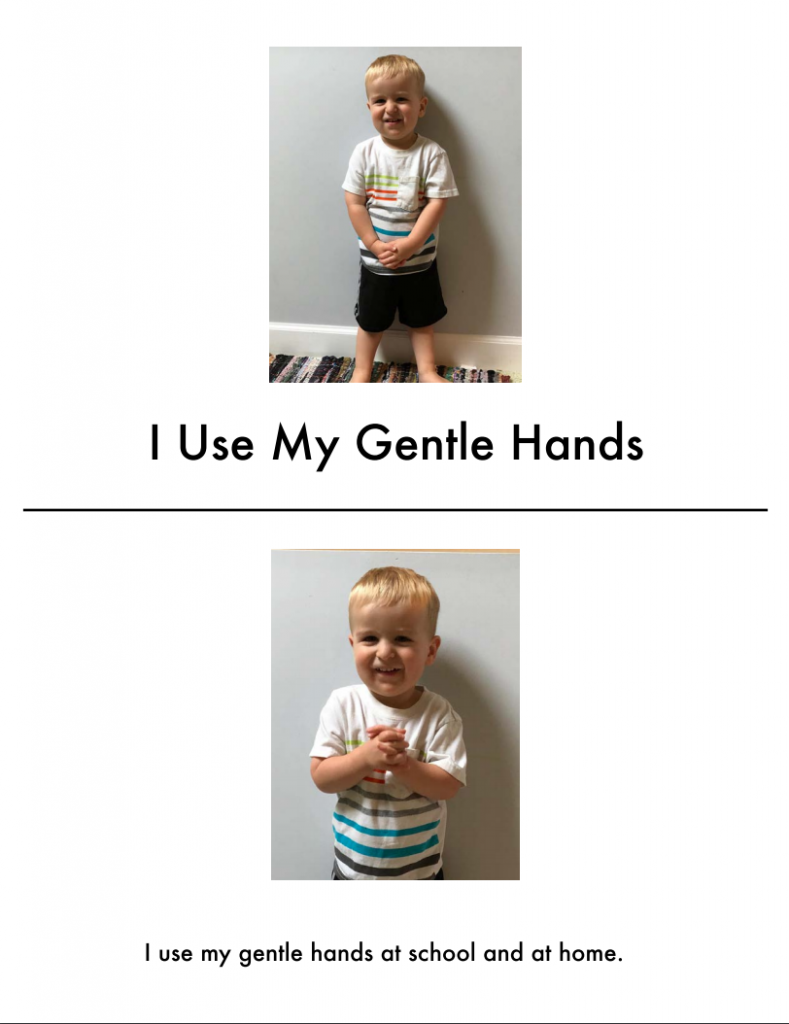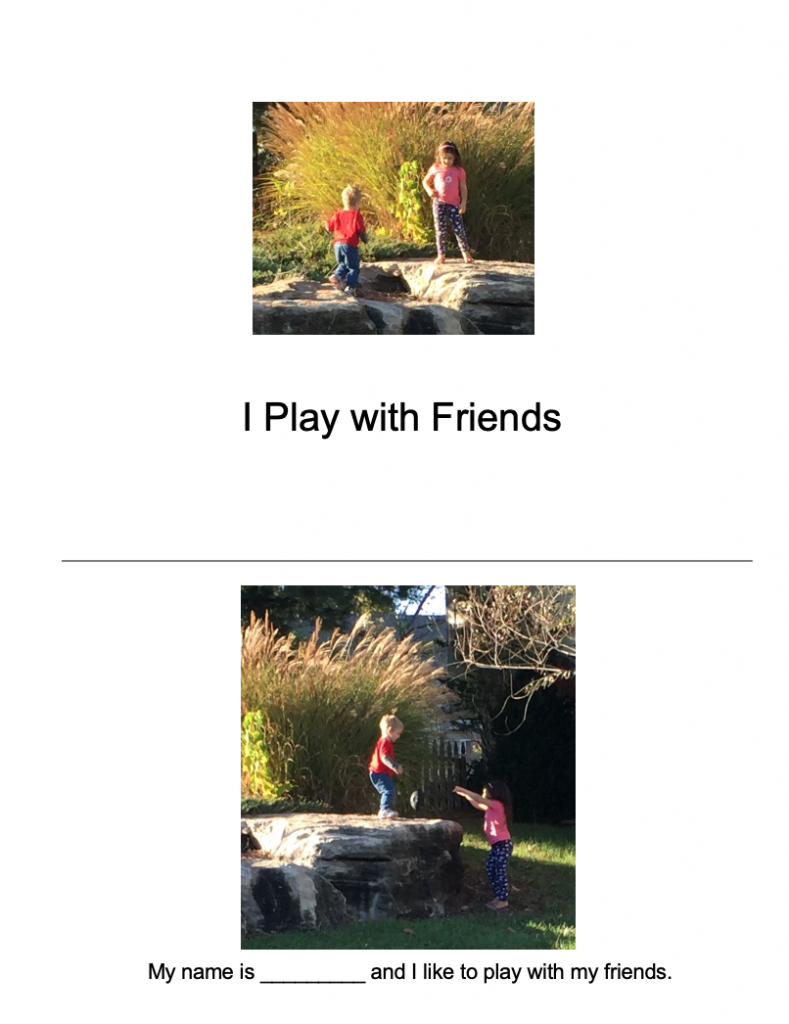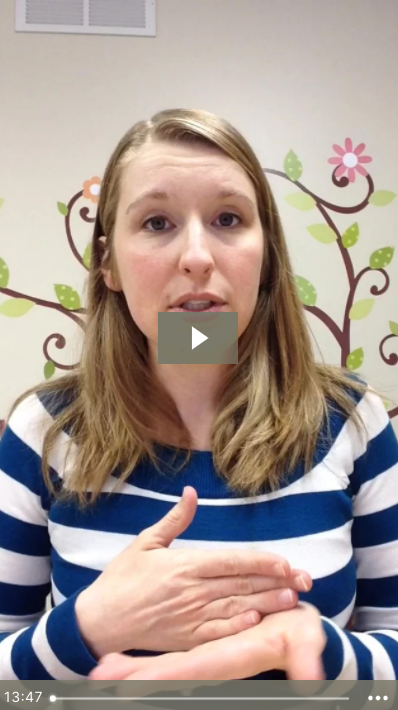Goal: Initiate Interactions with Others
Sample Goal:
Many children with social language impairments have difficulty initiating or starting an interaction. Some children aren’t at all motivated to interact with others and therefore need a little bit of encouragement from us to get the ball rolling. Other children are very interested in interacting with others but just don’t know how. They may act out to get attention or just hide themselves away instead of putting themselves out there. Here are some steps to help you figure out how to motivate children to initiate interactions and how to do it appropriately.
Download the No-Prep Therapy Kit:
We have a start-to-finish therapy kit that will give you everything you need to practice this skill in therapy and send home homework. Click the packet below to open it. Then, print it out and place it in the child’s notebook or binder.
Therapy Kit Coming Soon!
Therapy Phases:
- Now comes the fun part! Here’s where we break this larger skill down into manageable, bite-size pieces. Here’s how to break this skill down for therapy:
- Find a Why: SLP will identify a few motivations that they child may have for interacting. Older children will be able to list a few reasons that they would want to initiate an interaction.
- Teach the Way to Initiate: Student will attend to a social story or explanation of how to initiate interactions with others. Older children will be able to list several different ways to initiate interactions with others.
- Role Play: Student will role play with the speech-language pathologist or a peer to demonstrate how to initiate interactions in a structured setting.
- Carry-Over: When prompted by an adult, Student will use the identified strategy/strategies to initiate an interaction with a peer in the natural setting.
Supplemental Materials
Here are some other resources that may help you when working on this skill:
Social Story for Younger Child to Initiate
Here are a few examples of social stories I made for my own children when they were having issues initiating interactions.
Social Story for Older Child to Initiate
Here are a few examples of social stories I made for my own children when they were having issues initiating interactions.
Training Videos:
Need some extra help on treating this skill? Check out these related training videos:
Teaching a Child to Initiate Interactions
Description:
Overview:
Task Analysis (How To):
- Find a Why: SLP will identify a few motivations that they child may have for interacting. Older children will be able to list a few reasons that they would want to initiate an interaction.
- Teach the Way to Initiate: Student will attend to a social story or explanation of how to initiate interactions with others. Older children will be able to list several different ways to initiate interactions with others.
- Role Play: Student will role play with the speech-language pathologist or a peer to demonstrate how to initiate interactions in a structured setting.
- Carry-Over: When prompted by an adult, Student will use the identified strategy/strategies to initiate an interaction with a peer in the natural setting.
Activities:
For Younger/Less Verbal Children:
- Determine if the child is at all motivated to interact with children on his own. Does he engage in them in any ways? (getting close to them, hitting them, watching them, listening to them, trying to talk?)
- If the child is interested, figure out what part of the interaction he is seeking. Does he just want to be included in the group? Does he want someone to talk to? Does he want someone to play with him? Does he want someone to pay attention to him?
- From this you’ll identify at least one internal motivation that the child has for initiating, what is it that he seeks?
For Older/More Verbal Children:
- Tap into reasons that the child himself may want to interact with others. Are there certain activities or games he likes to engage in that are better with multiple people?
- Talk about reasons that the child may need to interact with others to participate in classroom activities/assignments
- Talk about reasons that the child may need to interact with others to get his wants and needs met in the classroom (asking another child for something)
- Talk about the benefits of having friends and how you need to interact with others to make and keep friends
For Children Who Don’t Seem Motivated to Interact at All:
- If he’s old enough, talk to him about the benefit of interaction and why he should care
- Provide opportunities for the child to engage in activities that are more fun with two people (playing catch, being pulled in a wagon, riding a teeter totter, playing a 2-person game, etc.). Look for the activities that the child seems to enjoy the most.
- Teach the child specifically how to initiate interactions to engage in those activities with others. Role play initiating with you first and then bring in other peers.
- Bring those cooperative toys and activities into the classroom so you can help the child initiate with his peers.
Once you have identified a reason that the child really may want to initiate an interaction, use that to build a skill. Think about the most appropriate way for that child to get that need met. For verbal children, you will teach them the specific words to say to initiate the type of interaction that they are seeking. For younger or non-verbal children, you may be teaching them to use AAC, gestures, or short phrases to initiate.
Once you’ve identified how you want the child to initiate, you’ll need to teach him the skill. My favorite way to do this is with social stories.
Click Here to Learn How to Use Social Stories
Here are a few examples of social stories I made for my own children when they were having issues initiating interactions. They were both interested in other people but their default is “crash and tumble” so they were both being too rough with the others. The first story is for my second child, who was at the 1-2 word level when we wrote it and the second story was for my hyper-verbal 3-year-old so his story includes longer sentences to say.
Once you’ve introduced the skill to the child, it’s time to role play it out. Read the social story with the child again and then, have him practice the skill on you. Give him a scenario (like, I’m playing with blocks in your classroom) and then have him practice what to say and how to say it. Make sure to provide feedback on good body language, such as proximity. Also, make sure you give him a chance to role play several different responses to his initiation as well. Sometimes, you’ll need to say “no, I don’t want to play” and help him navigate how to accept that as a response. Because it’s going to happen eventually. Once he can role play the concept with you, have him practice with other adults and peers as well.
Finally, you’ll need to help the child practice this skill in real life. I highly suggest you give a copy of the social story to the classroom teachers and have them go over it with him. This will help give the teacher ideas as to how to facilitate the interactions as well. You can also create a small visual that reminds the child what to do when he wants to initiate.
Either you or a teacher can facilitate this interaction in natural classroom situations. Train teachers on how to redirect the child to the expected behavior if she sees him resorting to old behaviors, such as being rough with the other kids. Or, if the child is not initiating at a time when he should, have the teacher go over and give him a few simple choices of how he wants to initiate with someone and then encourage him to go try. This could be saying “would you rather ask Betsy or Johnny to play?” or “would you rather ask to join his play or ask him to join you with something else?”.
Keep working on the skill in this way until the child is able to initiate appropriately without prompting.
Troubleshooting:
What do you do if these things don’t work the way they’re supposed to? Well, nothing’s ever easy, is it? Try these great troubleshooting tips that some of our other members have found helpful. Click the problem to drop down the link to the solution.
Children with autism often have difficulty initiating interactions. For more information on helping children with autism, click here:
Teaching Self-Calming Techniques
Once the child can identify emotions, it’s time to talk about which emotions are good and helpful and which ones get in the way:
- Happy, excited, calm are all ok
- Mad, scared, frustrated, over-excited can be a problem if they get too big
- Identify which emotions the child has trouble regulating
Teaching Self-Calming Techniques
Once the child can identify emotions, it’s time to talk about which emotions are good and helpful and which ones get in the way:
- Happy, excited, calm are all ok
- Mad, scared, frustrated, over-excited can be a problem if they get too big
- Identify which emotions the child has trouble regulating






